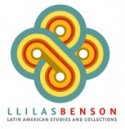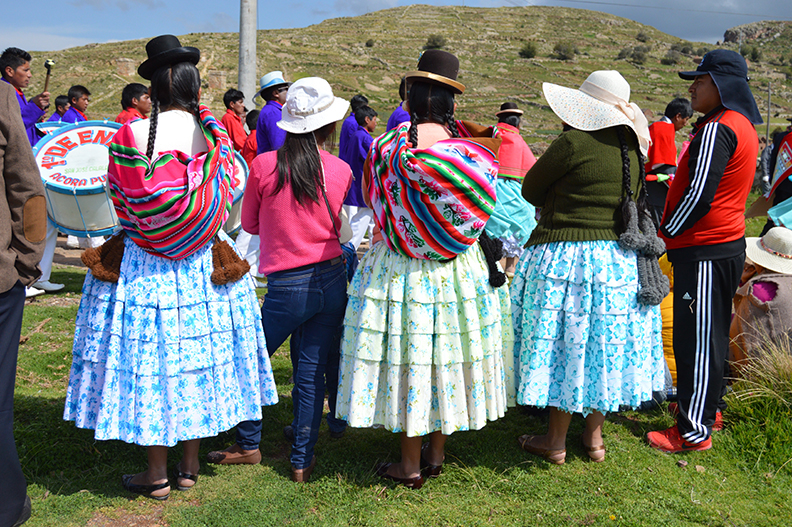
BY ANGELA TAPIA ARCE
Lucy does not smile too often. Like other women who wear polleras, she does not greet you with a wide grin, unless you are more than an acquaintance. Yet, when Lucy smiles the stars twinkle, whether or not the sun is overhead. She has two little silver stars inlaid into her teeth. However, these stars are not the only body adornments she owns. In her hair she hangs vicuña1 tullmas2 from her two braids’ ends as ornaments. She usually wears a special straw hat and jewelry, but no makeup. When she is selling “polleras style” clothing, she wears a falda (skirt). The falda, as wearers of this clothing call it, is a variant of polleras style. The major difference between the falda and polleras is that the latter are embellished with horizontal tiers in the middle of the skirt; otherwise the skirts look similar.
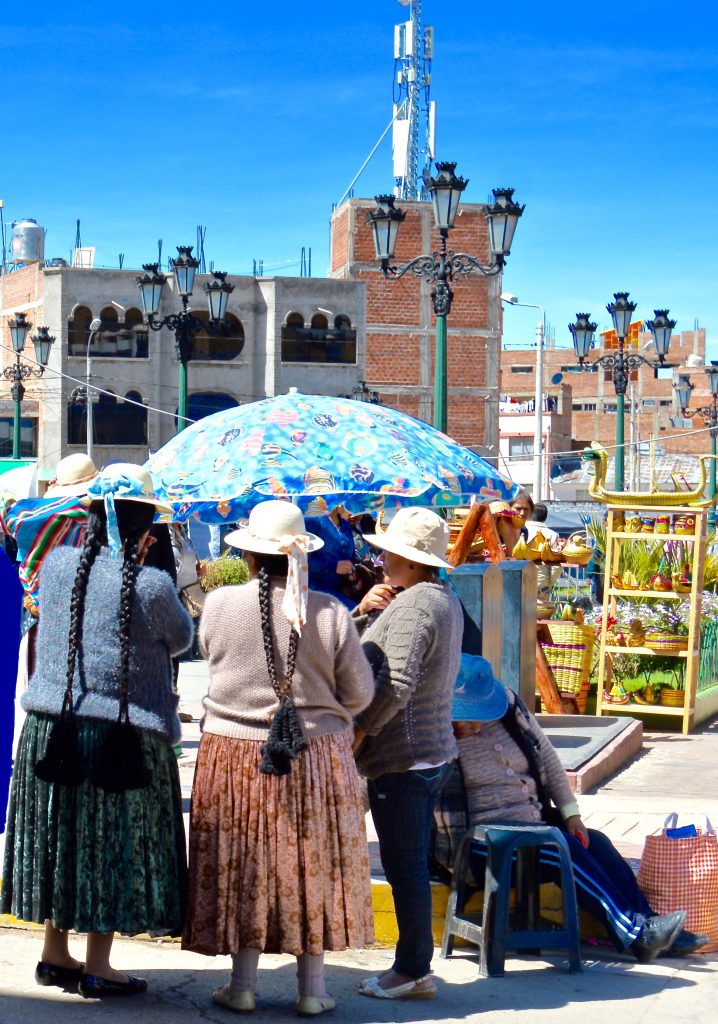
Although the pollera is more expensive, heavier, and more difficult to wash, this garment is still the preferred female clothing in the most important cities of the Altiplano region (Southeast of the Andes): La Paz and El Alto, Bolivia, and Puno, Peru. Academic explanations3 as to why women still wear polleras concentrate on identity issues and ties with the social group, but the aesthetic of polleras needs an examination. This article is an invitation to see “the other beauty”: How do “polleras women” negotiate the dominant aesthetics—especially as regards their sense of beauty—in their everyday lives?
Through the wearing of these bulky gathered skirts, women of the Altiplano display their notions of female attractiveness, which contrast with the Western ideal of the tall, slim, yet curvy woman exemplified by the Miss Universe pageant. The wearing of polleras is more than an art form through which women express their creative skills with the intention of being appreciated for beauty, fashion, and originality. Polleras, similar to the Western blazer, are a classic icon of elegance in the region. They constitute a part of the basic wardrobe of Indigenous women from this area. Paying close attention to matching different colors, women dressing in “polleras style” wearing a multilayered skirt composed of the external skirt—the pollera—plus five petticoats, a blouse, a cardigan, and a shawl with a broach at the chest. The jewelry they wear matches their high-quality clothing. Polleras are designed for daily activities as well as special occasions, such as the Fiesta de la Virgen de la Candelaria (Celebration of the Virgin of Candelaria) in February. They are also worn at more private events like weddings, where the bride’s mother, grandmother, and mother-in-law will dress in polleras even if the bride herself does not.
Polleras style is also distinguished by the use of the highly noticeable bowler hat, known as a bombín or borsalino. As with most of the other components, the purpose of the stylish bombín is embellishment. It does not have a broad brim, and its function is far from that of protector against sun or cold weather. It requires practice to wear the bombín because women do not put their whole head inside the hat. It sits atop the head like a slightly tilted crown, precariously positioned and always threatening to fall, lifeless, to the floor. Women embrace this risk using all their talents. For in order to wear a sophisticated polleras-style outfit topped with the tilted crown, a woman must move gracefully, even when bending to pick something up from the ground. These slow, elegant movements show how to wear this style of clothing. It is as if the wearers wished to embody the colossal, strong, and peaceful mountains of the Altiplano landscape. For Andean people, mountains are fundamental to human life, and they most appreciate those that are enormous.4
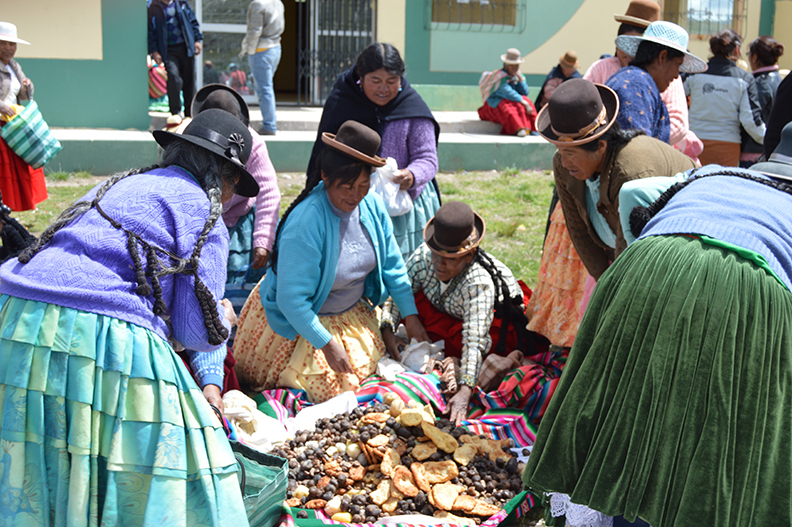
A Link to the Past
Polleras are an Andean legacy, descended from the Andean textiles of the Inca civilization, which author Peter Stallybrass referred to as a “cloth society.”5 Inca life—cultural, social, political, and economic—was organized around textiles that are still associated with the Andean region. Moreover, archaeological evidence and written chronicles indicate that Inca women wore pollera-type garments. Today, polleras still dominate the visual field as the most popular outfit in the Altiplano, even though they do not appear in the mainstream media. Some women choose to discontinue the wearing of polleras, justifying the choice on practical grounds, such as the weight or the high cost of the garment. Others stop wearing polleras when they achieve a higher social and economic rank. Wearers of polleras cannot ignore the pejorative connotations of their dress, nor can they claim that they do not experience racism because of their appearance.
Polleras matter; they are more than mere clothes. They mark their wearers as “Indian” and as women. The Spanish expression mujeres de pollera (polleras-women) literally implies that women are made of polleras or belong to polleras. The other term for polleras-wearers is chola, a word primarily used to identify Quechua and Aymara Indigenous peoples. Due to the negatives associated with being Indigenous—“ugly,” “dirty,” and “ignorant” are common adjectives—polleras-women do not self-identify as cholas. Instead, they say “me visto de chola” (I dress up as a chola) or “me da bien de chola” (I look good as a chola), as if being a chola were temporary and changeable. Yet Andean women have been wearing polleras for more than five centuries.
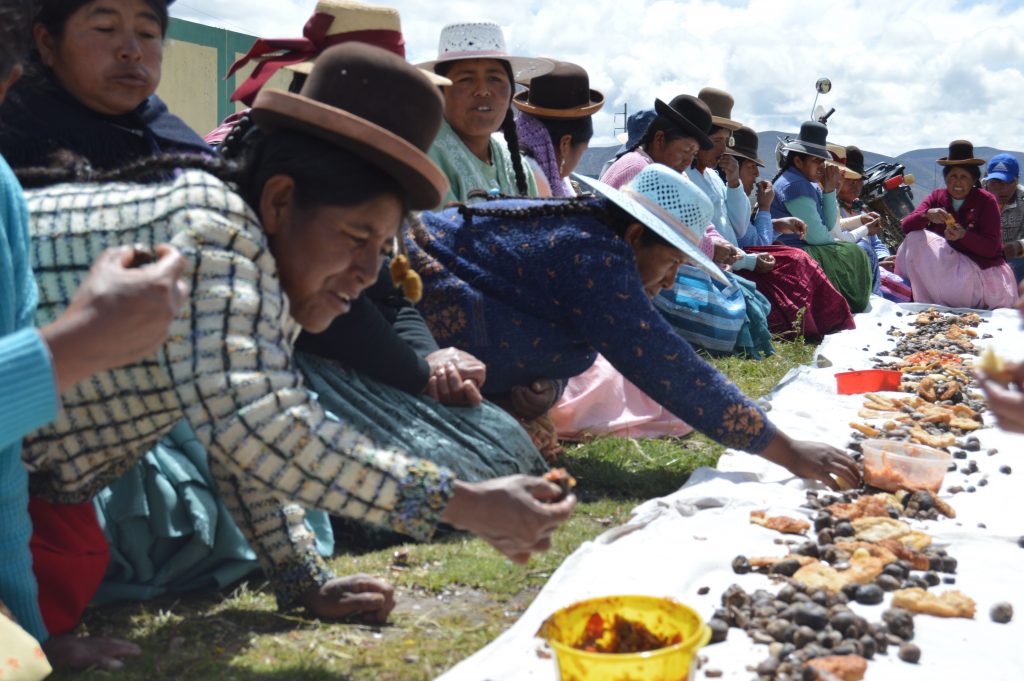
The original and ancient polleras have changed, giving way to indigeneity with new edges. Before European invasion of the Andes in 1532, polleras were handmade with natural threads. Today, polleras are made of synthetic printed fabric from China. Polleras style has fixed and “authentic” elements, such as the two long black braids, but other components are the result of industrial technology. In Puno and other cities in the Altiplano, polleras created from handmade cloth are not a valued garment. They communicate that the wearer is poor and does not know what is fashionable or even how to live in the city. When a garment has been on the market for a year or longer, the price can drop by more than 50 percent because polleras fashion trends usually last a year. The businesspeople who control the polleras fashion market are mostly Bolivian polleras-women who travel to China to buy the fabric. In fact, La Paz functions like Paris or New York, setting what is in vogue.
Power versus Invisibility
Polleras lend women a certain authority in their business dealings. A common economic activity among polleras-women is to sell artesanías (handicrafts). These merchants have different kinds of clients, and expectations surrounding the quality of their products vary based on ideas of authenticity. Polleras-women in the artesanías business sell mostly handmade goods of alpaca and baby alpaca, as well as synthetic wool. In contrast, Lucy sells components of the polleras style, dealing mostly in clothing made in China. Her clients are local women who rely on her because she wears what she offers.
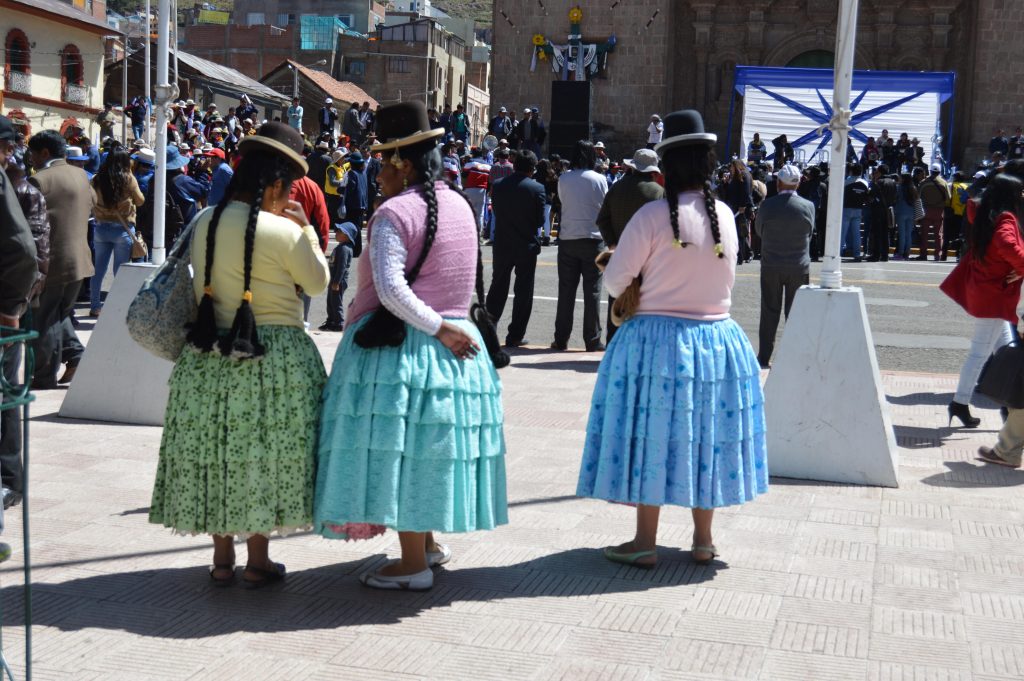
Unlike Lucy, the artisans do not wear the products they make. Their clients are tourists, and not only “gringos” (foreigners); many nacionales (nationals, mostly from Lima) also come looking for crafts from the Altiplano. While tourists frequently dress in dark tones, the polleras worn by Indigenous merchants are brightly colored. Even on the most crowded street in Puno city, tourists initially stand out due to their different skin, both the physical and “social skin” (clothing). The business transactions on this street embed both authenticity and otherness. For Lucy, financial transactions involve authenticity but are associated with fashion and “the other” beauty of the Andes. In both scenarios, the clothes of polleras-women are fundamental for selling their merchandise.
Polleras style is not immune to the influence of Western aesthetics, mainly as regards heterosexual consumption. This is particularly apparent in local celebrations such as the Fiesta de la Virgen de la Candelaria, which has gained international popularity. Polleras are present in all of the dances paying tribute to the patron saint of Puno. However, media images only show garments that expose the female body to the male gaze. In contrast, images of Lucy, or of the polleras-women who sell artesanías, are hidden because these depictions are not welcome in the mainstream Western visual world.
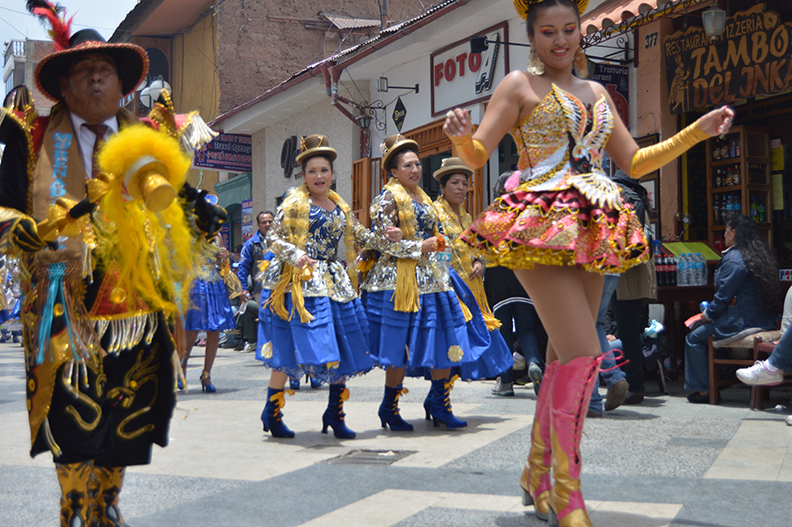
Polleras-women are contesting the dominant aesthetics of the West. By wearing polleras they maintain way of being that is a radical departure from Western standards of beauty. As Indigenous women and citizens of a modern society, they experience poverty and racism as part of their day-to-day. Despite all of this, polleras-women define beauty on their own terms. Through the wearing of polleras, they are building their own notion of beauty, even while borrowing elements from those who would reject them. The skirt and other components make polleras into a style of dress; the ideas surrounding polleras make indigeneity and modernity into a textile that is constantly being torn and restitched.
Angela Tapia Arce is a PhD candidate in Latin American Studies at The University of Texas at Austin. She was born into a Quechua family in Puno, Peru. She wrote this article during her fieldwork in the Andes.
Notes
1. The finest fiber in the world comes from a small member of the camel family that lives wild in the high alpine areas of the Andes.
2. This adornment has two other names: in Aymara it is kanachankas, and in Quechua it is sinkula.
3. Mary Weismantel, Cholas and Pishtacos: Stories of Race and Sex in the Andes (Chicago: University of Chicago Press, 2001); Andrew Canessa, Intimate Indigeneities: Race, Sex, and History in the Small Spaces of Andean Life (Durham, NC: Duke University Press, 2012); Raquel Ackerman, “Clothes and Identity in the Central Andes: Province of Abancay, Peru,” in Textile Traditions of Mesoamerica and the Andes, ed. Margot Blum Schevill, Janet Catherine Berlo, and Edward B. Dwyer (Austin: University of Texas Press, 2010).
4. Marisol de la Cadena, Earth Beings: Ecologies of Practice across Andean Worlds (Durham, NC: Duke University Press, 2015).
5. Peter Stallybrass, “Worn Worlds: Clothes, Mourning and the Life of Things,” in Cultural Memory and the Construction of Identity, ed. D. Ben-Amos and L. Weissberg (Detroit: Wayne State University Press, 1999).


